A European Adventure
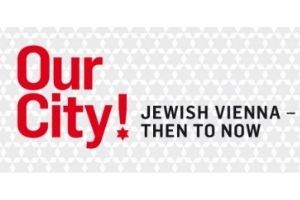
A blog post by Visitor Services Coordinator Abby Krolik. To read more posts by Abby, click HERE.
You’re going to hate me right now. I’ve returned recently from gallivanting around Europe. For the first two weeks of June, I was visiting both sites and friends in beautiful places with world renowned chocolate and low humidity while Baltimore was suffering under a heat index of 102. I’ll spare you the lovely details and jump to my last stop, in Vienna, where I visited the local Jewish Museum (I have no qualms about taking busman’s holidays).
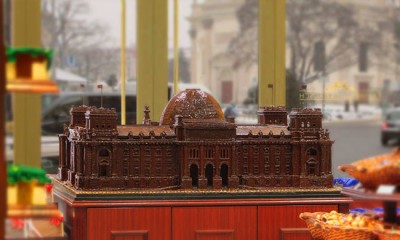
The Jewish Museum Vienna actually has two locations within the city: there is the main building on Dorotheergasse, just off of one of the main shopping/tourist strips, which houses their primary exhibition. The second location is on the Judenplatz, where, as you might have already guessed from the name, was the old (in this case, medieval) Jewish neighborhood. The focus of the Judenplatz location is the synagogue that stood there until 1420, when a pogrom led to the razing of the synagogue and forced the Jewish community to leave the city.
Because Judenplatz was very close to where I was staying, I ended up visiting the two locations in reverse order. The Judenplatz part of the museum actually starts outside its building. It begins on the square, where the Viennese Holocaust memorial–also known as “The Nameless Library”–stands. Designed by Rachel Whiteread, the memorial is made of “inside-out” shelves, filled with books whose spines are invisible–hence the name. It represents the loss of knowledge, memory, and the lives of “the People of the Book” who were killed, not just in the Holocaust (though that is definitely its focus), but also in the Viennese Geserah (Disaster) of 1420. This layering of memorialized tragedies makes it unique among European Holocaust memorials.
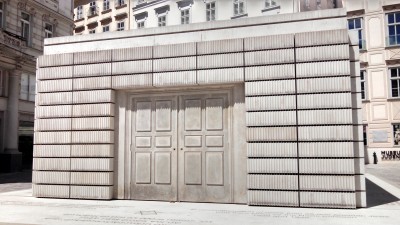
Inside the museum itself, there is a small and frustratingly spare exhibit on Jewish life in Vienna in the Middle Ages. Its highlight is the room in which you can see the actual excavated remains of the stone foundations for the old synagogue.
The museum also included a bizarre “exhibit” on the life of Amy Winehouse, curated by her brother. Interestingly enough, as described in the introduction by her brother, the exhibit was meant to be more like a memorial to her life geared towards those who never knew her personally rather than an actual academic exploration of her life and work. In this somewhat strange and roundabout way, it actually fit in with the memorial just outside.
Thankfully, the main location of the Vienna Jewish Museum was much more satisfying. Along with changing exhibitions that, much like the JMM, explore various, lesser-known corners of regional Jewish life (on display at the time of my visit was an exhibit of Jews who fought for Austria in WWI and a small display of Jewish textiles), the museum has a truly exceptional permanent exhibition on the Jews of Vienna, from the Middle Ages to the present. Entitled “Our City! Jewish Vienna–Then to Now,” the exhibition seeks to explain to outsiders the strong and complex ties between the Jews of Vienna and their city.
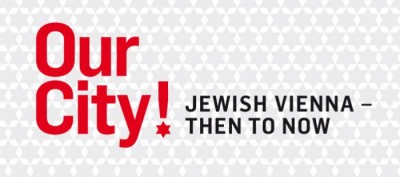
In a clearly calculated–and, I think, successful–move, the curators of the show decided to begin with the history of the Viennese Jewish community from 1945 to today. It starts with the bittersweet re-grouping of the community, attempting to grapple with their memories, confirming the fates of lost loved ones and the things they’ve left behind, and re-establishing relationships with their gentile neighbors.
Austria was slow to officially acknowledge its part in letting the Holocaust happen and its responsibility towards Austrian survivors, which caused significant tension between Jews and non-Jews in Austrian politics in the last half of the 20th century. My only criticism of this section is that, while specific instances of this tension, such as when Kurt Waldheim was appointed Austria’s president in 1986 despite having participated in the Austrian Nazi government, are mentioned in the exhibit, it was often with only very cursory explanations, as if they expected you to already know what had happened.
The section ends with a portrait of contemporary Jewish life, including photographs from various communal simchas. This drove home the point that the curators were trying make with their reverse chronological order: Jewish life in Vienna did not stop with the Holocaust. It was greatly reduced and continues to encounter challenges, but, thanks to the many Soviet Jews who moved to Vienna after the end of the Cold War, the community is there and it is thriving.
After that hopeful note, visitors are directed to go upstairs to see the second section of the exhibit–Jewish life in Vienna from the Middle Ages to 1945. This section makes good use of its vast collection of manuscripts, photographs, recordings, portraits, and Judaica to trace the ups and downs of the story of the Viennese Jews.
There were three historical Jewish communities in the city: the medieval one that ended with their expulsion in 1420; their brief re-entry in the 17th century; and the third and largest one, which began in the early 19th century under the reign of Emperor Franz Josef I, and continued until the Holocaust.
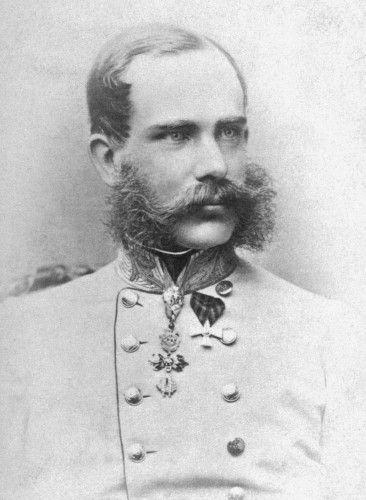
In each case, the Jewish community faced strong anti-semitism that in the best of times meant very high taxes (creating a deceptively wealthy Jewish community in Vienna in the 17th and 19th centuries simply because poor Jews couldn’t afford to stay) and in the worst of times meant humiliation and expulsion. Despite this, or really because of it, Jews contributed disproportionately to the empire’s military campaigns as well as to the city’s cultural life, whether it was through giving the money to build the opera house or having the talent to be appointed the director of that opera house.
A large section of the gallery is devoted to the many Jewish cultural figures in Vienna during the 19th-20th centuries. This includes the obvious names–Sigmund Freud, Gustav Mahler, Theodore Herzl, etc.–as well as lesser known but equally important ones, like the cantor Salomon Sulzer; the Olympic hopefuls, Fritzi Löwy, Lucie Goldner, and Hedy Bienenfeld; and the Ephrussi banking family (about whom I was simultaneously reading in The Hare with Amber Eyes–which is a fantastic book!).
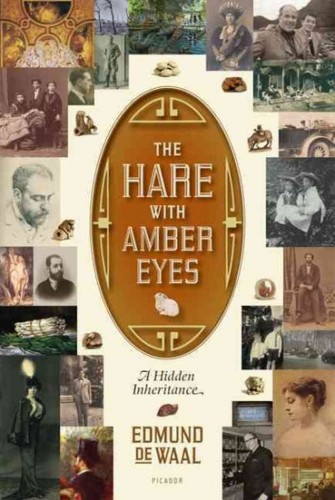
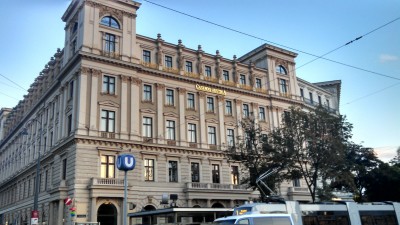
Because of their invaluable contributions to the empire’s economy, the Habsburg rulers gradually eased the laws restricting Jewish life there–even eventually granting full citizenship–thus garnering a fierce loyalty from their Jewish subjects. This loyalty served the Jewish community poorly when nationalism and WWI disintegrated the empire and the Habsburg reign. Their contributions and sacrifices during the war were quickly forgotten or dismissed in the internecine years that followed.
The end of the exhibit details the sudden and violent decline of the Viennese Jewish community through postcards, movie reels, and official Nazi documents regarding Eichmann’s plan to address the “Jewish Question.” Before the start of WWII, Vienna had the third largest Jewish population in the world, with over 185,000. By 1946, there were only 25,000, and today there are barely 7,000.
I left the museum that day with an expanded appreciation for the tenacity of the Jewish communities in places like Vienna, Berlin, Amsterdam, and the many other European cities where Jews have had to scatter and regroup so many times throughout history. And I hope that if any of you have the opportunity to visit the city of Vienna, you will take the time to visit this fascinating museum.
